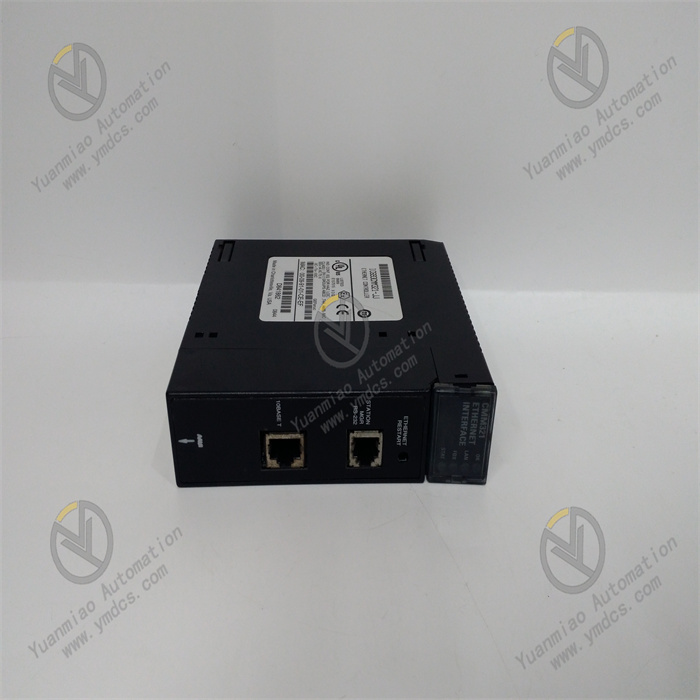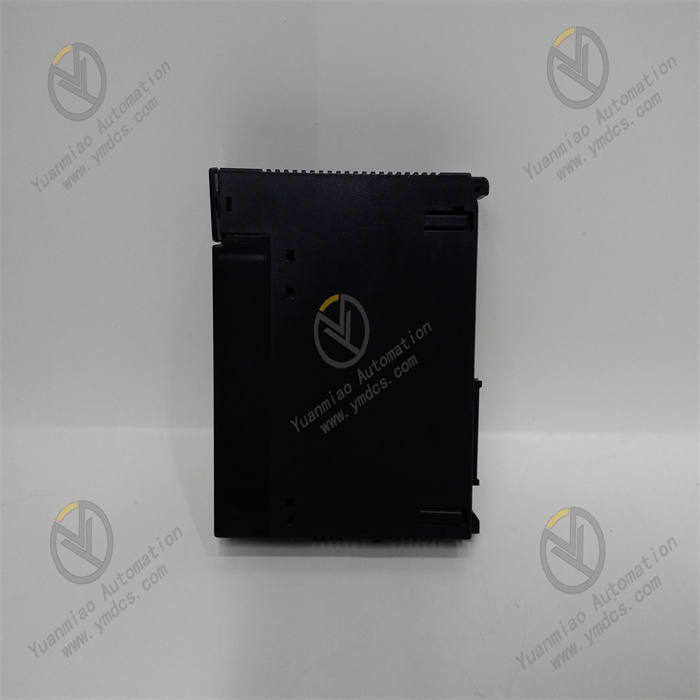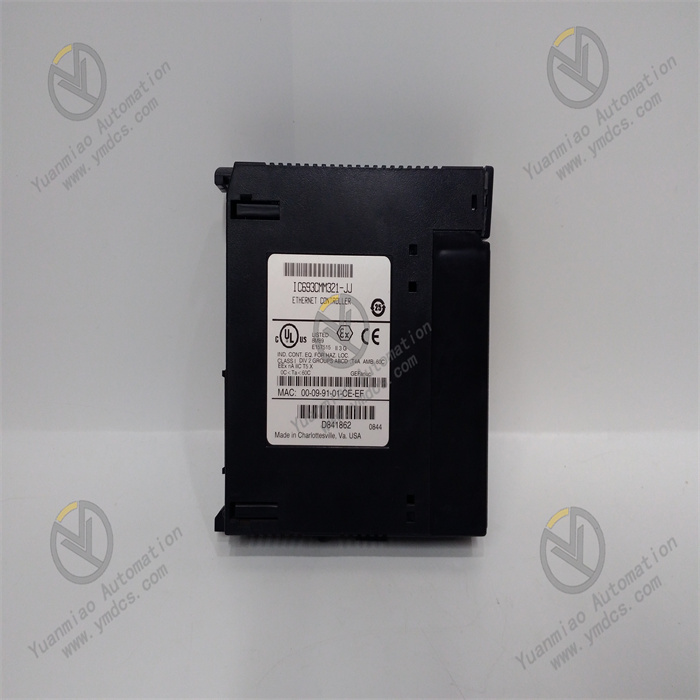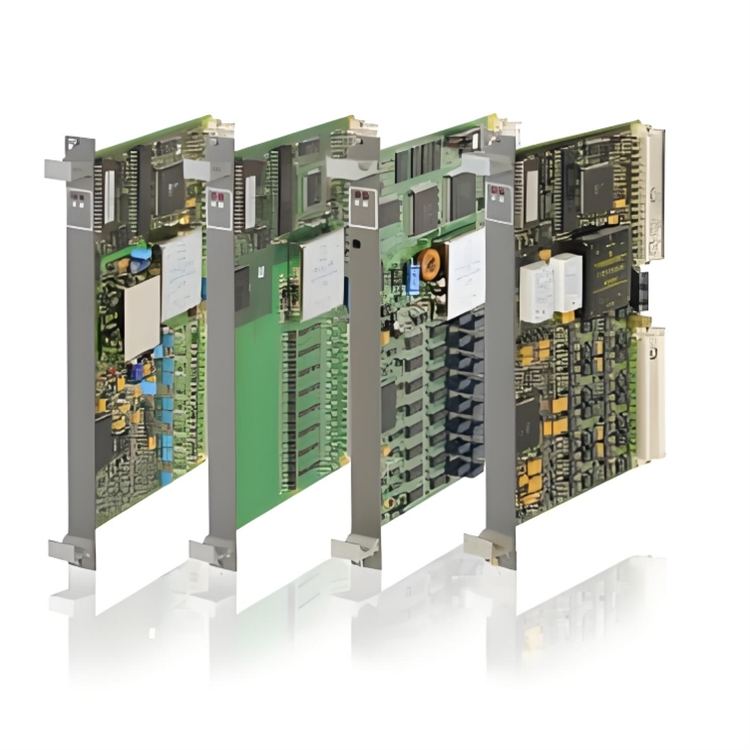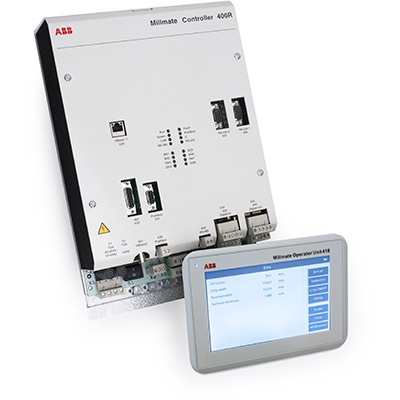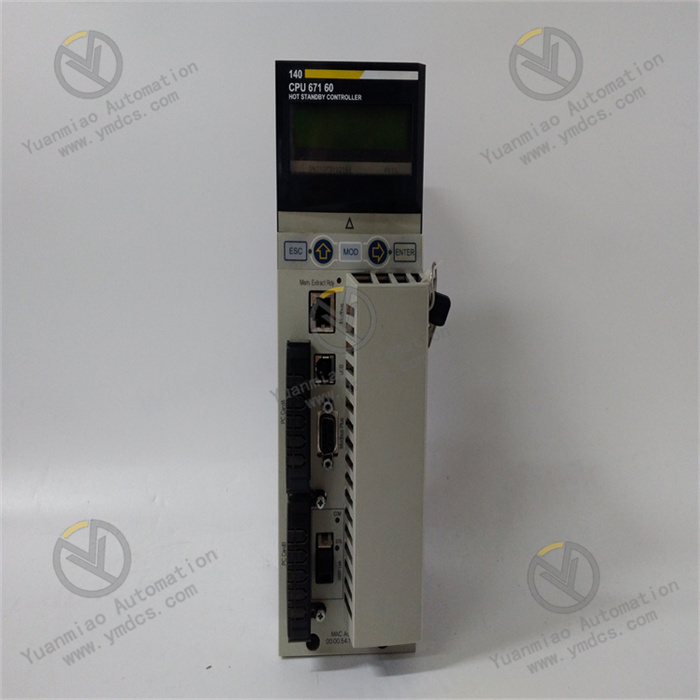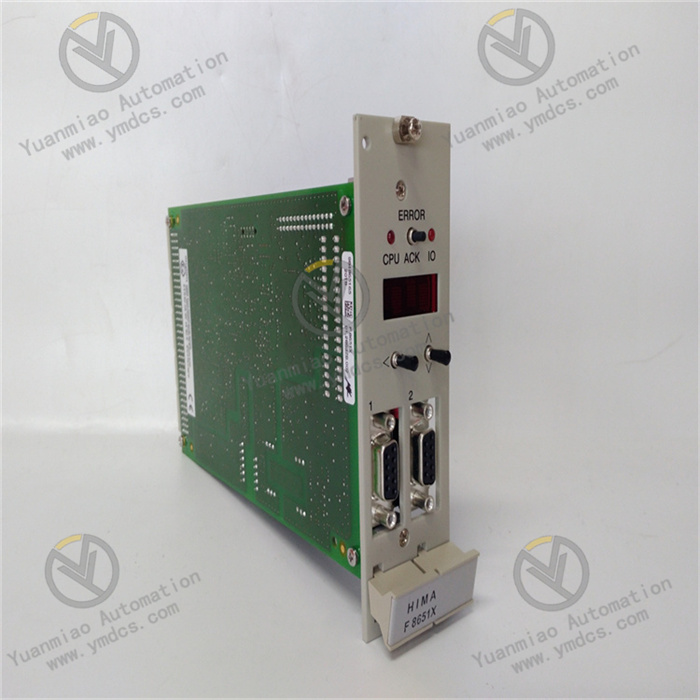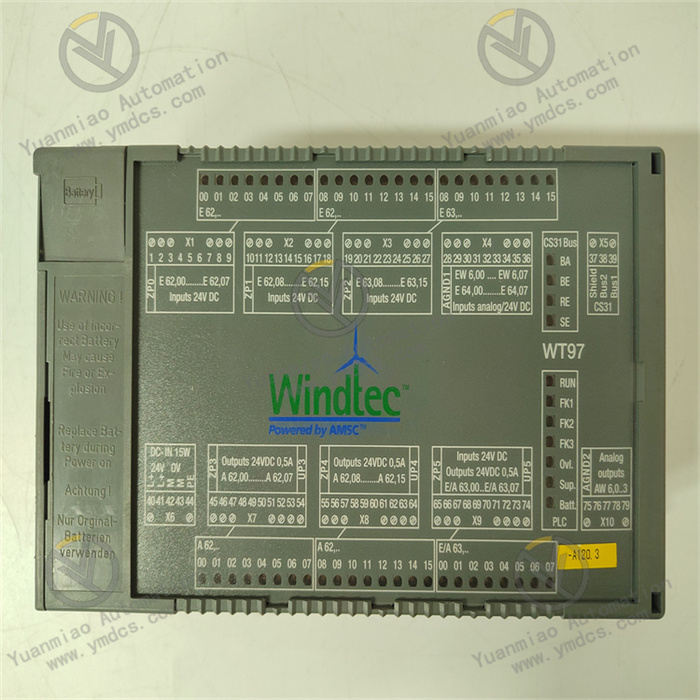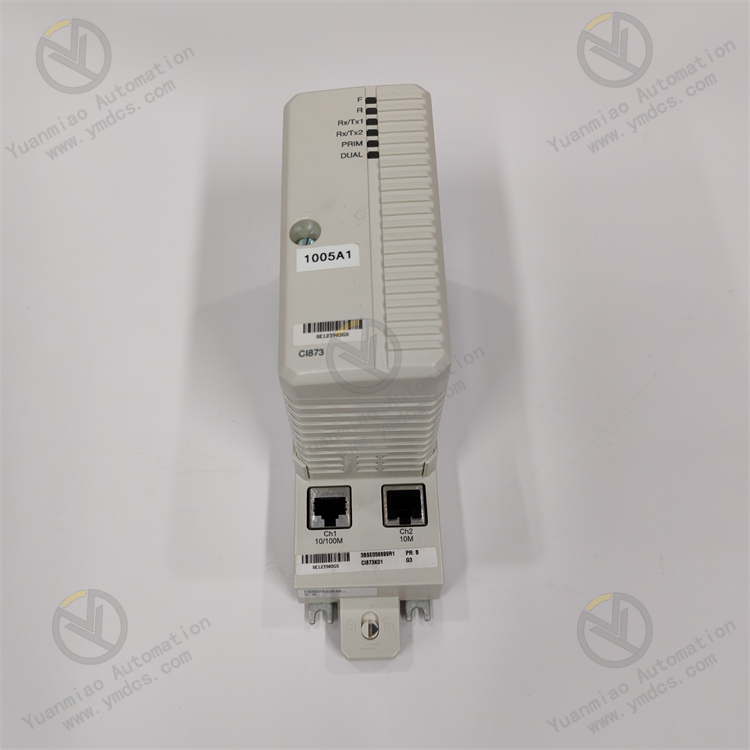Description
GE IC693CMM321
I. Overview
GE IC693CMM321 is an important communication module in the GE Fanuc 90-30 series. Its main function is to realize the communication connection between the 90-30 series PLC and other equipment or systems, playing a key role in data transmission in industrial automation networks. It can transmit the on-site data collected by the PLC to devices such as upper computers and HMI (Human-Machine Interface), and at the same time receive control commands from these devices, realizing information interaction and collaborative work of industrial control systems. It provides reliable communication guarantee for centralized monitoring, remote management and automatic control of industrial production, and is widely used in various industrial automation scenarios.
II. Technical Parameters
- Communication Interfaces: Equipped with multiple communication interfaces, including RS-232 and RS-485 serial communication interfaces, which can meet the communication needs of different devices. The RS-232 interface is suitable for short-distance communication, usually used to connect local HMI, programming equipment, etc.; the RS-485 interface supports long-distance communication and multi-node connection, and can connect up to 32 devices, which is suitable for building distributed industrial communication networks, facilitating data interaction with remote sensors, actuators or other control devices.
- Communication Protocols: Supports a variety of mainstream industrial communication protocols, such as Modbus RTU protocol, which is a widely used serial communication protocol in the industrial field. It can realize data exchange between master and slave devices, enabling IC693CMM321 to communicate seamlessly with various devices supporting this protocol, such as intelligent instruments, frequency converters, PLCs of other brands, etc., enhancing the compatibility and flexibility of the system.
- Data Transmission Rate: Supports multiple baud rate settings, common baud rates include 1200bps, 2400bps, 4800bps, 9600bps, 19200bps, etc. Users can choose the appropriate baud rate according to the actual communication distance and data transmission volume requirements, taking into account the data transmission speed while ensuring communication stability.
- Power Requirements: Powered by the backplane bus of the PLC system, with an operating voltage of 5V DC and low current consumption, it will not cause excessive pressure on the system power supply, ensuring the stable operation of the module during communication and reducing communication interruptions caused by power problems.
- Working Environment: The operating temperature range is 0°C to 60°C, which can adapt to temperature changes in industrial sites and work normally in high-temperature production workshops or low-temperature control rooms. The relative humidity adaptation range is 5%-95% (non-condensing), which can operate reliably in humid environments and avoid affecting communication performance due to humidity issues. At the same time, it has a certain anti-vibration and anti-shock capability, meeting the environmental requirements of industrial-grade equipment, ensuring that communication is not disturbed under mechanical vibration in industrial production.
- Physical Characteristics: The module has a compact size design, matching the installation size of other modules in the 90-30 series, which is convenient for installation with other modules in the control cabinet, saving installation space. It adopts a standard module structure, is light in weight, and is easy to install and disassemble, which is beneficial to later maintenance and replacement.
III. Functional Characteristics
- Diversified Communication Support: GE IC693CMM321 has RS-232 and RS-485 serial communication interfaces, and supports mainstream communication protocols such as Modbus RTU, which can communicate with various types of industrial equipment. Whether it is connecting local programming equipment for program downloading and debugging, or forming a distributed network with remote sensors and actuators, it can flexibly respond to meet the diversified communication needs in industrial automation systems.
- Reliable Data Transmission: Adopting advanced communication technology and error correction mechanism to ensure the accuracy and integrity of data during transmission. In industrial environments, there are various electromagnetic interferences. Through good circuit design and shielding measures, the module reduces the impact of interference on data transmission, reduces the probability of data loss and errors, ensures that important control commands and on-site data can be transmitted accurately, and guarantees the stable operation of industrial control systems.
- Flexible Network Configuration: Supports multi-node communication. A multi-device communication network can be built through the RS-485 interface. Users can configure the number of devices and communication parameters in the network according to actual needs to realize collaborative work between devices. At the same time, parameters such as the baud rate of the module can be flexibly set through programming software, which is convenient for users to optimize communication performance according to factors such as communication distance and data volume, and improve network adaptability.
- Status Monitoring and Diagnosis: It has a certain self-diagnosis function and can monitor its own communication status in real time, such as whether the interface connection is normal and whether data transmission has errors. When a communication abnormality is detected, it will issue a prompt through corresponding status indicators (such as communication indicator, fault indicator), helping technicians quickly judge the approximate location of the communication fault, shorten the fault Investigation time, and improve the maintenance efficiency of the system.
- Seamless Integration with the System: As part of the 90-30 series, IC693CMM321 has good compatibility with CPU modules, I/O modules, etc. of this series, and can be seamlessly integrated into the 90-30 series PLC system. The module exchanges data with the CPU module through the backplane bus, with fast data transmission speed, ensuring that the PLC can timely obtain information from external devices and send control commands, realizing efficient collaborative work of the entire control system.
IV. Common Faults and Solutions
- Communication Connection Failure
- Phenomenon: The module cannot establish a communication connection with other devices, and the upper computer or HMI cannot obtain PLC data or send control commands.
- Possible Causes: Poor contact or damage of the communication interface, such as loose interface plug, bent or oxidized pins; communication cable failure, such as internal disconnection, short circuit of the cable, or not using a shielded cable that meets the requirements; inconsistent communication parameter settings, such as baud rate, data bit, stop bit, parity bit, etc., do not match the connected device; wrong device address setting, in a multi-node network, if the address of the module or other devices is duplicated or wrong, it will cause communication conflict.
- Solutions: Check the communication interface, re-plug the plug, clean the oxide layer of the interface pins, and replace the interface components if the interface is damaged; replace with a new communication cable that meets the specifications, ensure the cable is connected correctly, and use a shielded cable and Ensure proper grounding for long-distance communication; check and unify the communication parameters of the module and the connected device to ensure that the baud rate, data bit, etc. are set consistently; check the device address to ensure that each device address in the network is unique and set correctly.
- Data Transmission Error or Loss
- Phenomenon: Errors occur during data transmission, such as value deviation, garbled characters, or partial data loss, resulting in abnormal display of the monitoring screen and wrong execution of control commands.
- Possible Causes: There is strong electromagnetic interference in the industrial site, affecting the communication signal; the communication cable is too long, exceeding the effective transmission distance of this communication method, leading to signal attenuation; the communication circuit of the module or connected device is faulty, such as chip aging, capacitor failure, etc.
- Solutions: Take measures to strengthen shielding, such as adding a metal shielding layer to the communication cable and reliably grounding it, and keeping the communication cable away from strong interference sources such as large motors and transformers; shorten the length of the communication cable, and if the distance is long, add a repeater to enhance the signal; check the communication circuit of the module and connected devices, replace aging or damaged components, and replace the module or device if necessary.
- Abnormal Status Indicators
- Phenomenon: The communication indicator is not on, flickers abnormally, or the fault indicator is always on, which cannot normally reflect the communication status of the module.
- Possible Causes: Abnormal power supply of the module, such as insufficient power supply voltage of the backplane bus or poor contact; internal circuit fault of the module, such as damage to the indicator light drive circuit; fault such as short circuit of the communication interface, causing the module to enter the protection state.
- Solutions: Check the power connection of the module to ensure that the backplane bus power supply is normal and the voltage is stable at 5V DC; if the power supply is normal, there may be an internal circuit fault of the module, and it is necessary to contact professional personnel for maintenance or replace the module; check whether there is a short circuit in the communication interface, and observe whether the indicator light returns to normal after eliminating the short circuit fault.
- Abnormal Communication in Multi-Node Network
- Phenomenon: In the RS-485 multi-node network, some node devices cannot communicate, or data conflicts and communication jams occur in the network.
- Possible Causes: The number of nodes in the network exceeds the maximum number supported by the module (32); the cable impedance between nodes does not match, leading to signal reflection; the network terminal is not installed with a terminal resistor or the resistance value of the terminal resistor is inappropriate.
- Solutions: Reduce the number of nodes in the network, or expand the network capacity by adding repeaters; select a communication cable with matching impedance to ensure that the characteristic impedance of the cable meets the RS-485 communication standard (usually 120Ω); install a suitable terminal resistor (120Ω) on the two end nodes of the network to reduce signal reflection and improve communication quality.


